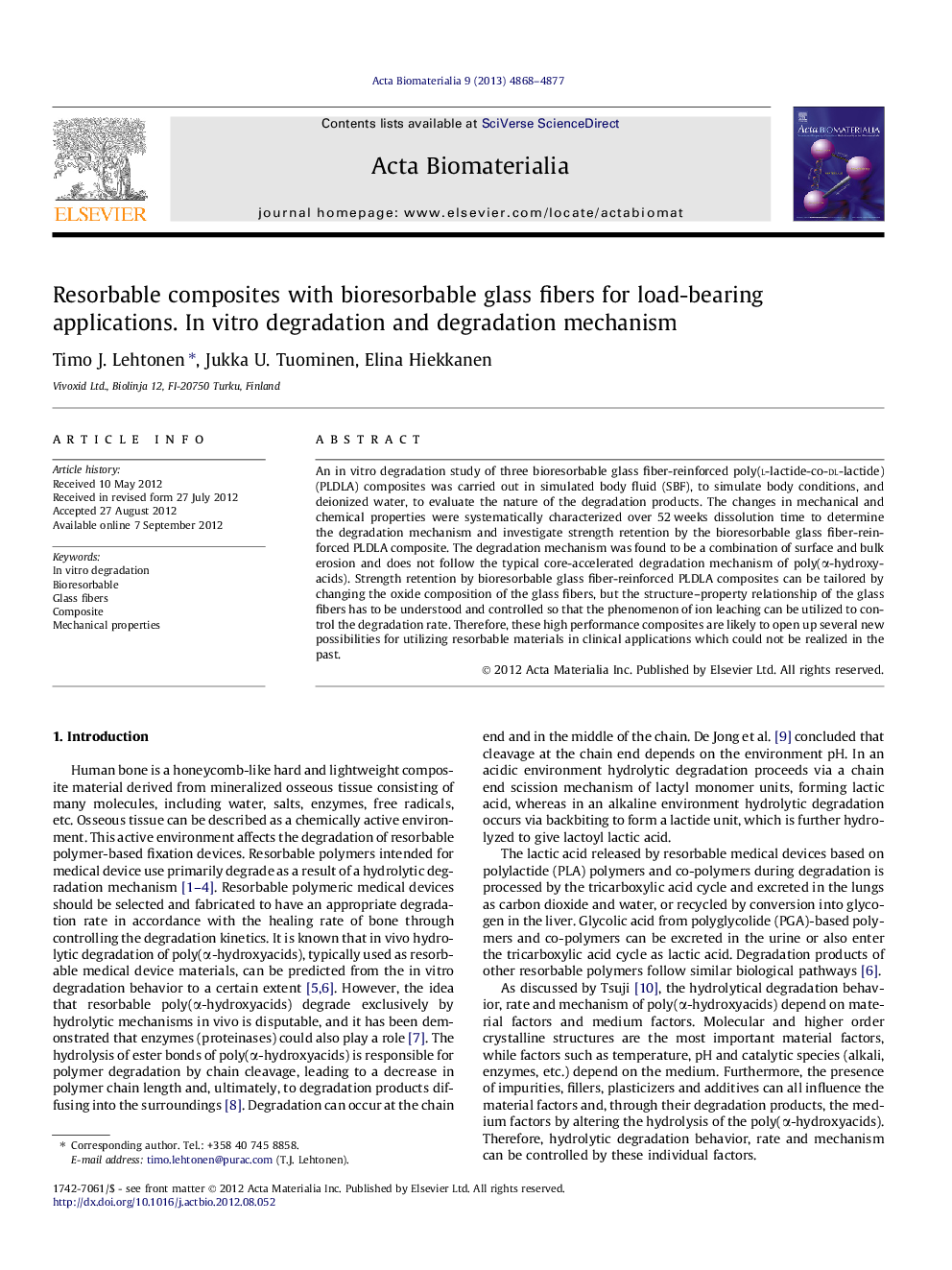| Article ID | Journal | Published Year | Pages | File Type |
|---|---|---|---|---|
| 942 | Acta Biomaterialia | 2013 | 10 Pages |
An in vitro degradation study of three bioresorbable glass fiber-reinforced poly(l-lactide-co-dl-lactide) (PLDLA) composites was carried out in simulated body fluid (SBF), to simulate body conditions, and deionized water, to evaluate the nature of the degradation products. The changes in mechanical and chemical properties were systematically characterized over 52 weeks dissolution time to determine the degradation mechanism and investigate strength retention by the bioresorbable glass fiber-reinforced PLDLA composite. The degradation mechanism was found to be a combination of surface and bulk erosion and does not follow the typical core-accelerated degradation mechanism of poly(α-hydroxyacids). Strength retention by bioresorbable glass fiber-reinforced PLDLA composites can be tailored by changing the oxide composition of the glass fibers, but the structure–property relationship of the glass fibers has to be understood and controlled so that the phenomenon of ion leaching can be utilized to control the degradation rate. Therefore, these high performance composites are likely to open up several new possibilities for utilizing resorbable materials in clinical applications which could not be realized in the past.
